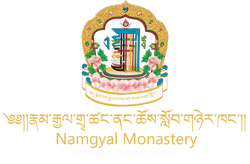History of Buddhism

The teachings of the historic Buddha form the basis of the Buddhist world-view and practice. The Buddha (Shakyamuni or Siddhartha Gautama) was born about 2565 years ago in what is now part of Nepal.
Teachers in the Buddhist tradition — whether in village meeting places, in monasteries, or in modern universities — retell this life history of the Buddha to convey basic principals of Buddhist philosophy. Paintings depicting the key events in the historic Buddha’s life adorn monasteries and temples throughout the Buddhist world.
He was born into a royal clan yet he abandoned worldly power and wealth in pursuit of truth and enlightenment. Academic historians find the basic narrative of the Buddha’s biography as related in Buddhist teachings to be consistent with archaeological and other historical evidence. Teachers in the Buddhist tradition — whether in village meeting places, in monasteries, or in modern universities — retell this life history of the Buddha to convey basic principals of Buddhist philosophy. Paintings depicting the key events in the historic Buddha’s life adorn monasteries and temples throughout the Buddhist world.
In Buddhist tradition, the life-transforming experience for the young Shakyamuni was his encounter with human suffering, decay, and death that occurred on a sojourn beyond the protected world of the palace compound in which he lived. At age 29 he renounced the world and set out on a quest for meaning and enlightenment which he attained at age 37 after intense meditation at Bhodhgaya, a village in North India and a principal site of contemporary Buddhist pilgrimage. He went on to teach for some 40 years and the power of his teachings attracted more and more followers from multiple walks of life. The teachings in their concise analysis of the human condition and their clear guidance in achieving release from suffering spread extensively across northern India and were especially attractive because they provided an alternative to the rigid social and ritual strictures prevalent in Hindu north India at the time. Buddhism has always been open to everyone. People from all walks of life can enter into the Buddhist community either as monastic renouncers or lay devotees.






